Electrotherapy Combined with Chiropractic Care: Clinical Trial Results for Neuropathic Pain Relief
July 7, 2025
12 min

Understanding Combined Electrotherapy and Chiropractic Care
Neuropathic pain, often chronic and debilitating, challenges conventional treatment strategies, prompting exploration of combined therapies. This article delves into clinical trial results and scientific evidence regarding the efficacy and mechanisms of electrotherapy combined with chiropractic care in neuropathic pain relief, providing a comprehensive review for practitioners and patients alike.
Clinical Trial Evidence on Chiropractic Care and Electrotherapy for Neuropathic Pain
Overview of recent clinical trials involving chiropractic spinal manipulative therapy (SMT) combined with home exercise programs
Recent clinical research has focused on evaluating different approaches to managing back-related leg pain (BRLP), especially through chiropractic interventions. These randomized trials aim to determine whether combining spinal manipulative therapy (SMT) with other treatments improves patient outcomes.
Many studies employ rigorous methodologies, including randomization, blinding, and intention-to-treat analysis, adhering to the CONSORT guidelines to ensure data reliability.
Specific clinical trial data related to leg pain radiating from lumbar region (BRLP)
BRLP is characterized by pain originating in the lower back and radiating into the leg, potentially with neurological signs. A significant trial involved 192 patients from Twin Cities, MN, and Quad Cities, Iowa and Illinois, assessing the effects of SMT combined with a home exercise program versus exercises alone.
The primary measure was patients' typical leg pain over the past week, rated on an 11-point scale. Results showed moderate improvements with the combined treatment, with benefits sustained over time. Secondary outcomes included disability, patient satisfaction, medication use, and biomechanical tests, all supporting the effectiveness of chiropractic SMT for BRLP.
Beyond pain relief, objective assessments included biomechanical analyses and patient-reported outcomes, providing a comprehensive picture of treatment efficacy. Although previous evidence was limited mainly to acute cases, this trial notably extends findings to include chronic BRLP cases, filling a crucial research gap.
Methodologies ensuring reliability and validity of findings
The trial employed several robust scientific practices:
- Randomized allocation to treatment groups
- Blinded outcome assessments
- Use of intention-to-treat analysis to handle dropouts and maintain statistical integrity
- Following established clinical research guidelines such as CONSORT
By applying these methods, the study offers credible evidence regarding the role of chiropractic SMT combined with home exercise in managing subacute and chronic back-related leg pain.
While this research mainly investigates chiropractic care, it aligns with preliminary evidence suggesting that multimodal approaches—including electrotherapy—may further enhance outcomes.
| Aspect | Details | Additional Notes |
|---|---|---|
| Study Focus | Chiropractic SMT + HEP for BRLP | Addresses chronic cases with biomechanical and patient-reported outcomes |
| Location | Twin Cities MN, Quad Cities in IA and IL | Enhances generalizability of findings |
| Sample Size | 192 patients | Ensures statistical power |
| Primary Outcome | Level of leg pain (0-10 scale) | Main indicator of treatment success |
| Secondary Outcomes | Disability, satisfaction, biomechanical tests | Offers comprehensive assessment |
| Methodology | Randomized, blinded, intent-to-treat | Ensures validity and reliability |
| Future Implications | Supports integrating chiropractic care with other modalities | Calls for further research on combined therapies |
This emerging evidence underscores the potential utility of chiropractic SMT, particularly when paired with structured exercise, in managing neuropathic and radicular pain associated with back conditions.
Mechanisms Behind Electrotherapy and Chiropractic Synergy
What mechanisms explain how electrotherapy and chiropractic care may work together to treat neuropathic pain?
Electrotherapy modalities like Transcutaneous Electrical Nerve Stimulation (TENS) and scrambler therapy, as well as chiropractic adjustments, interact in ways that can enhance pain relief, especially for nerve-related issues.
Electrotherapy works mainly by interfering with pain signals. TENS and scrambler therapy activate the gate control mechanism in the nervous system, which inhibits nociceptive signals transmitting pain to the brain. They also promote increased blood flow and reduce inflammation, creating a tissue environment conducive to healing.
Chiropractic care, on the other hand, aims to realign the spine and improve nervous system function. By correcting subluxations or misalignments, chiropractic adjustments reduce mechanical stress on nerves and optimize nerve signaling pathways.
When combined, these approaches may provide a comprehensive treatment strategy. Electrotherapy addresses nerve signal transmission and tissue health, while chiropractic care ensures the structural integrity of the spine and nervous system connectivity. This synergy can lead to decreased nerve compression, improved cellular repair, and a modulation of pain pathways.
Research suggests that such combined therapies can be more effective than either treatment alone, particularly because they target both biological and structural aspects of neuropathic pain. Overall, they work together to reduce pain, improve neural function, and support tissue regeneration, offering a promising approach for managing complex nerve pain conditions.
Electrotherapy Modalities in Neuropathic Pain Relief: Efficacy and Safety
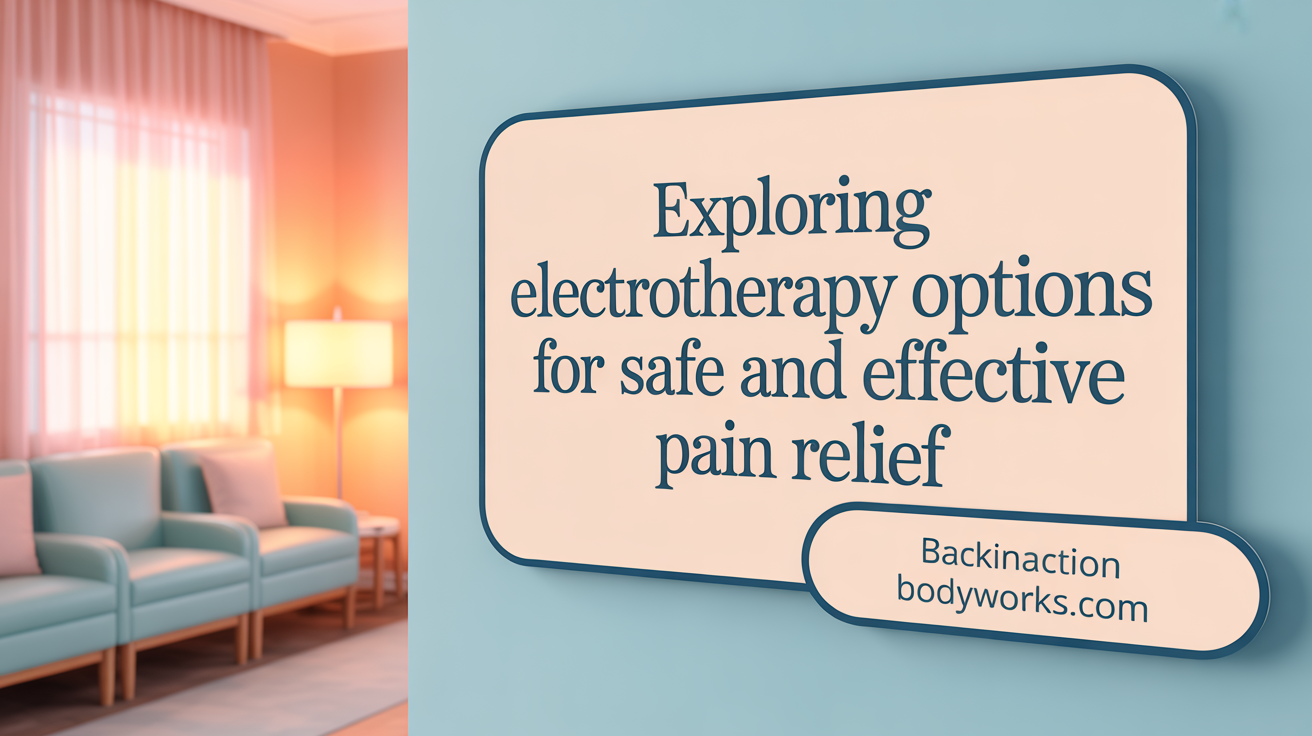
Does electrotherapy effectively relieve neuropathic pain?
Electrotherapy methods, such as transcutaneous electrical nerve stimulation (TENS) and scrambler therapy, have demonstrated promising results in managing neuropathic pain. TENS works by delivering electrical impulses through the skin to interfere with pain signals and promote nerve healing. Studies show that many patients experience notable reductions in pain symptoms and sensory disturbances after treatment.
Scrambler therapy, approved by the FDA since 2009, uses electrical stimulation to 'scramble' pain signals, aiming to provide lasting relief. Clinical observations suggest that between 80% and 90% of chronic pain sufferers benefit from this therapy, with some experiencing durable effects even after treatment stops.
Electrical stimulation aids in decreasing inflammation, improving blood flow, and supporting nerve tissue regeneration. It can address various nerve issues, including diabetic neuropathy and other small or large fiber neuropathies.
Comparing benefits and limitations of different electrotherapy types
Different electrotherapy modalities have unique strengths and limitations:
| Therapy Type | Benefits | Limitations | Applications |
|---|---|---|---|
| TENS | Non-invasive, easy to apply, effective for temporary relief | May require repeated sessions, temporary relief possible | Chronic pain, post-surgical pain, neuropathy |
| Scrambler Therapy | Potentially long-lasting relief, FDA-approved | Costlier, less widely available, requires specialized equipment | Chronic and refractory pain |
| Other electrical modalities | Tailored to specific pain types, some experimental | Limited evidence, variable patient responses | Emerging use in chronic pain management |
Safety profile and noninvasive nature of electrotherapy
Electrotherapy techniques are generally considered safe and non-invasive. They do not involve drugs or surgical interventions, making them appealing options for many patients, particularly those seeking alternatives to medication. Common mild side effects may include skin irritation or discomfort at the electrode site.
Because of their safety profile, electrotherapy options can often be integrated into multimodal pain management approaches. Nevertheless, certain medical conditions, such as pacemakers or skin infections, might contraindicate their use. Proper assessment and professional guidance are essential for safe and effective treatment.
In summary, electrotherapy presents a promising avenue for neuropathic pain relief, with a good safety record and increasing clinical evidence supporting its use. Further research will help optimize protocols and expand its application in chronic pain management.
Role of Chiropractic Care in Managing Neuropathic Pain

How do chiropractic treatments address nervous system and musculoskeletal components?
Chiropractic care focuses on correcting spinal misalignments and optimizing musculoskeletal health, which can positively influence nerve function. Through spinal adjustments and soft tissue therapies, chiropractors aim to reduce nerve irritation, improve biomechanics, and promote proper nervous system signaling.
Recent studies highlight the potential benefits of chiropractic interventions for patients with back-related leg pain (BRLP), a neuropathic condition characterized by radiating leg pain originating in the lumbar region. For example, a large randomized trial involving nearly 200 patients found that combining chiropractic spinal manipulative therapy (SMT) with home exercises improved pain and functional outcomes over time compared to exercises alone. Such findings suggest that chiropractic care can influence neural pathways involved in pain perception and regulation.
How does chiropractic care impact symptoms like pain, tingling, and weakness?
Chiropractic treatments are often used to alleviate common symptoms associated with neuropathy, such as persistent pain, tingling sensations, and muscle weakness. By restoring spinal alignment and reducing mechanical stress on nerves, these therapies can decrease nerve inflammation and irritation.
Multiple intervention studies support this approach. For instance, short-term combined therapies with electrical stimulation and soft tissue mobilization have shown to significantly decrease pain levels and improve motor function in individuals with chronic low back pain. These improvements can translate to relief from the sensations of tingling and numbness, as well as enhancements in muscle strength.
Use of spinal adjustments and soft tissue techniques as complementary therapies
Spinal manipulative therapy (SMT) and soft tissue techniques such as massage and IASTM are commonly used in conjunction with other treatments to manage neuropathic symptoms. These methods can accelerate recovery, improve circulation, and support nerve regeneration.
Research points to the overall safety and efficacy of such combined approaches. For example, in headache management, spinal manipulation has shown to be effective both during and after treatment, illustrating its role as part of a multimodal approach. Similarly, for shoulder dysfunction and other musculoskeletal issues that may exacerbate nerve-related pain, manipulative therapies contribute to faster recovery and better symptom control.
While chiropractic care may not cure neuropathy, its capacity to address underlying structural issues offers a valuable complementary option for symptom relief, enhancing nerve function, and supporting overall nervous system health.
| Treatment Type | Effect | Additional Notes |
|---|---|---|
| Spinal Adjustments | Improve alignment, reduce nerve irritation | Used as primary chiropractic intervention |
| Soft Tissue Therapy | Decrease inflammation, promote circulation | Includes massage, IASTM |
| Electrical Stimulation | Reduce pain, improve motor function | Often combined with other therapies |
| Multimodal Approaches | Enhanced symptom management | Combining therapies yields better outcomes |
This integrative approach underscores chiropractic care as an effective adjunct in managing neuropathic pain, emphasizing symptom alleviation and improving patients' quality of life.
Integrative Clinical Results: Combining Electrotherapy and Chiropractic Care
Recent clinical trials have explored the benefits of combining electrotherapy techniques like TENS with manual therapies such as instrument-assisted soft tissue mobilization (IASTM). In a study involving 32 young men with chronic low back pain, this short-term treatment over three weeks resulted in significant reductions in pain levels, measured using the Visual Analog Scale (VAS) and Face Pain Rating Scale (FPRS).
Along with pain relief, motor functions showed notable improvements. Tests including the Oswestry Disability Index (ODI), passive straight leg raise (PSLR), and the supine bridge test (SBT) all demonstrated better performance after the combined treatment.
The positive outcomes suggest that integrating electrotherapy and manual therapy can be an effective approach for managing chronic low back pain. Patients experienced not just immediate pain relief but also enhanced mobility and muscular function.
In terms of long-term impact, studies have reported high patient satisfaction with these multimodal interventions, although more research is needed to determine sustained benefits over time. Overall, combining electrotherapy like TENS with soft tissue mobilization offers a promising strategy to improve pain management and functional recovery in chronic low back pain sufferers.
Comparative Effectiveness: Multidisciplinary versus Single Modality Care

Comparison between chiropractic care alone and integrative approaches in low back pain and neuropathic pain contexts
Research comparing chiropractic care directly with multidisciplinary or integrative treatments provides insight into the potential benefits of combining different therapeutic modalities. A notable study contrasted monodisciplinary chiropractic care (CC) with a multidisciplinary integrative care (IC) approach for low back pain. The findings indicated that IC was more effective over a one-year period, with patients experiencing a 47% reduction in pain compared to 43% with CC.
While the primary focus was on low back pain, the outcomes suggest that an approach combining chiropractic techniques with other therapies may enhance pain relief and improve overall patient satisfaction. Although specific data on neuropathic pain—such as BRLP—using combined chiropractic and electrotherapy approaches are limited, these results support the potential of multimodal strategies to address complex or chronic pain cases better.
Pain intensity and disability outcomes over extended follow-ups
Evaluations of pain intensity across various studies consistently show that multidisciplinary approaches tend to produce better long-term results. For example, in the study on low back pain, IC patients reported greater pain reduction and improved disability scores, with benefits persisting during follow-up periods.
Similarly, in patients with chronic low back pain, short-term combined therapies like TENS and IASTM also demonstrated significant pain reduction and motor function improvements. These findings reinforce that addressing both mobilization and nerve stimulation may reduce pain and enhance functional abilities effectively.
Safety and adverse event reporting in multi-modal trials
Across these studies, no significant adverse events were reported with multimodal or single-discipline interventions. Safety profiles were consistently positive, and treatments like manipulative therapies, TENS, and scrambler therapy are considered safe when appropriately administered.
In sum, evidence suggests that integrated approaches combining chiropractic care with other therapies can offer substantial pain relief and functional gains without increasing risks, making them a promising option for managing subacute, chronic, and neuropathic pain.
Emerging Technologies and Future Directions in Electrotherapy and Chiropractic Integration
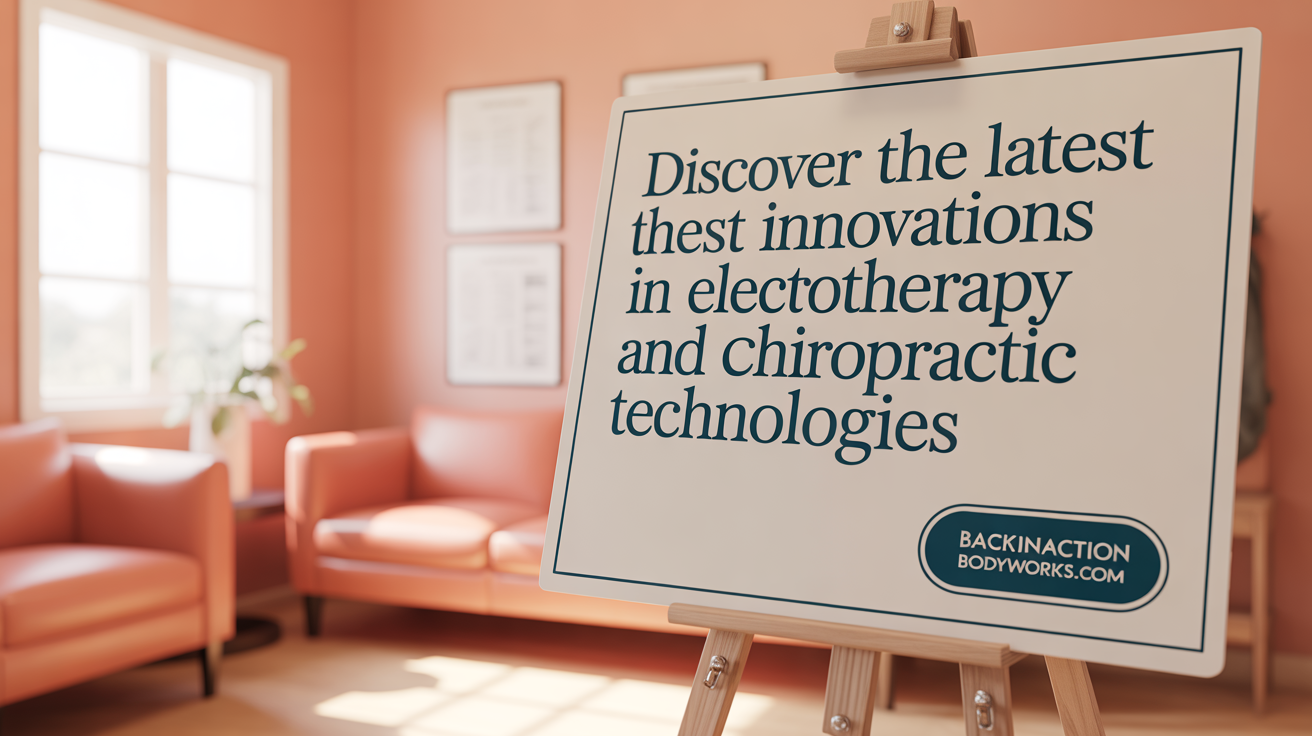
Innovative Devices Like Famuscle LSTM for Electrotherapy
Recent advances have introduced sophisticated devices such as the Famuscle LSTM from Trycam Technology, Korea, which are designed to enhance electrotherapy techniques. These devices aim to optimize pain relief and improve motor function, particularly in chronic low back pain (CLBP) patients. By integrating such technology into treatment plans, practitioners can potentially achieve more precise and effective results.
FDA Approval Status and Clinical Adoption of Scrambler Therapy
Since its FDA approval in 2009, scrambler therapy has gained recognition as a noninvasive method for managing chronic pain. This therapy works by sending electrical signals through skin electrodes to
Clinical Practice Implications and Patient Considerations

Guidelines for integrating electrotherapy and chiropractic care in neuropathic pain management
Recent research indicates that combining modalities such as transcutaneous electrical nerve stimulation (TENS), instrument-assisted soft tissue mobilization (IASTM), and chiropractic spinal manipulative therapy (SMT) may enhance pain relief and motor function in patients with chronic low back pain, including cases involving nerve pain.
While specific guidelines are still evolving, practitioners are encouraged to consider multimodal approaches tailored to individual patient needs. The use of noninvasive electrotherapy techniques like TENS can be integrated into chiropractic care plans to potentially reduce pain and improve mobility, especially in cases where nerve involvement is prominent.
It is essential that clinicians follow established protocols and ensure treatments are evidence-based. Close monitoring and patient feedback should guide adjustments, and techniques should adhere to safety standards to minimize risks.
Patient selection criteria, contraindications, and safety considerations
Selecting appropriate patients for combined electrotherapy and chiropractic interventions involves evaluating the nature and duration of pain, neurological signs, and overall health status. Patients with active infections, skin abnormalities at electrode sites, pacemakers, or other electronic implants are generally contraindicated for electrical stimulation.
Safety remains paramount; treatments should be performed by trained practitioners who can recognize adverse reactions such as skin irritation, allergic responses, or unexpected worsening of symptoms. Prior thorough assessment helps ensure the therapy's suitability and safety.
Potential for opioid reduction and improved quality of life
Effective nonpharmacological interventions like chiropractic SMT combined with electrotherapy have shown promise in managing neuropathic and back-related pain. This approach may reduce a patient’s reliance on opioids, thereby lowering the risk of side effects and dependency.
Patients often report increased satisfaction and better functional outcomes, contributing to overall improved quality of life. As the evidence base grows, integrating these therapies into pain management protocols offers a viable path toward more comprehensive and safer patient care.
Synthesis and Outlook on Combined Electrotherapy and Chiropractic Treatments
Clinical studies and evolving scientific evidence underscore the promise of combining electrotherapy with chiropractic care for neuropathic pain relief. While existing trials reveal encouraging outcomes in pain reduction, functional improvements, and patient satisfaction, more rigorous, long-term research is essential to definitively establish safety and efficacy. Understanding the mechanistic synergy between electrical stimulation and spinal manipulation provides a foundation for integrative treatment approaches. Practitioners should consider individualized patient profiles to optimize therapy benefits and minimize risks. Advances in technology and growing clinical experience highlight a future where multimodal treatment regimens may become standard in managing complex neuropathic pain, reducing reliance on pharmacologic interventions and enhancing patient quality of life.
References
- Chiropractic and self-care for back-related leg pain - PubMed Central
- Multidisciplinary integrative care versus chiropractic care for low ...
- Effects of transcutaneous electrical nerve stimulation and instrument ...
- Scrambler Therapy May Offer Lasting Relief for Chronic Pain ...
- Medline ® Abstracts for References 21-24 of 'Spinal manipulation in ...
- Electrical Stimulation for Neuropathy | El Paso Foot Doctor
- Electrical Stimulation as an Adjunctive Treatment of Painful and ...
- Do Electrical Stimulation Devices Reduce Pain and Improve Function?
- Clinical Effectiveness and Efficacy of Chiropractic Spinal ... - Frontiers
Recent articles
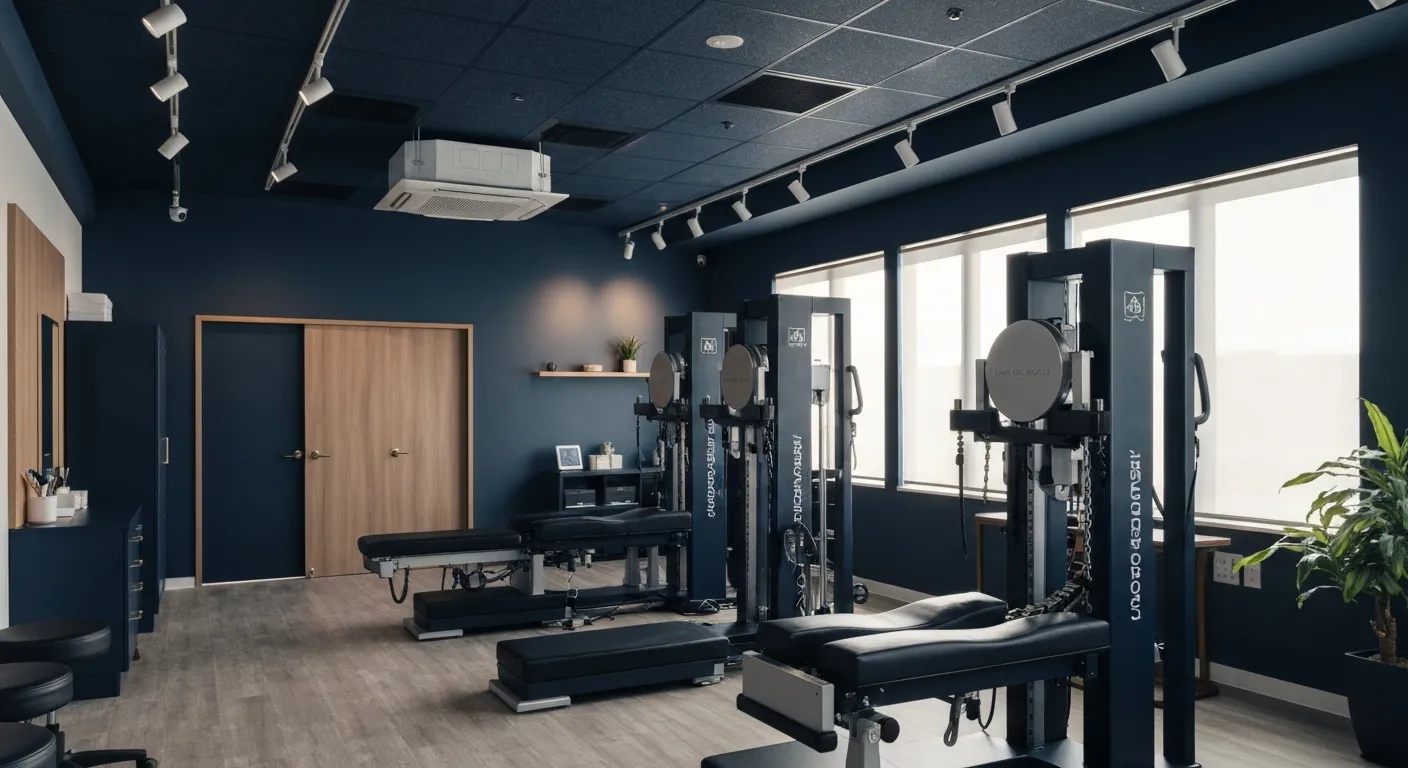
Sciatica Relief Through Targeted Spinal Decompression

Integrating Physiotherapy with Chiropractic Treatments for Better Results

Testimonials That Demonstrate the Benefits of Chiropractic Care

The Power of Corrective Exercises in Pain Management

A Step-by-Step Guide to Your Initial Chiropractic Consultation

9 Nutritional Tips to Enhance Your Chiropractic Wellness Journey

Patient Experiences: How Chiropractic Care Changed Their Lives

Lifestyle Recommendations to Keep Your Spine in Top Shape

Effective Corrective Exercises for Long-Term Pain Relief

Back Pain Benefits: What Chiropractic Care Can Do for You
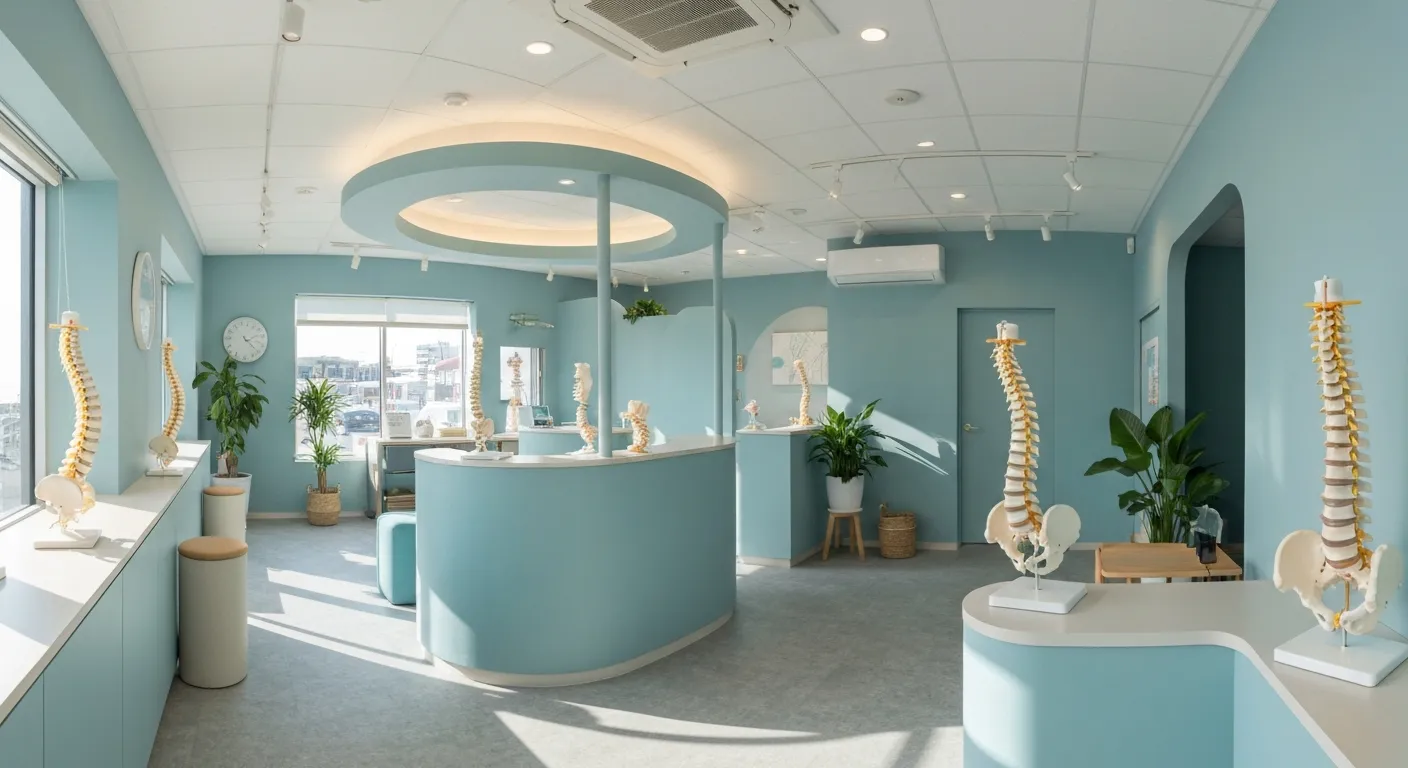
Spinal Decompression Techniques for Effective Sciatica Relief

Top Nutritional Counseling Tips for Enhanced Wellness
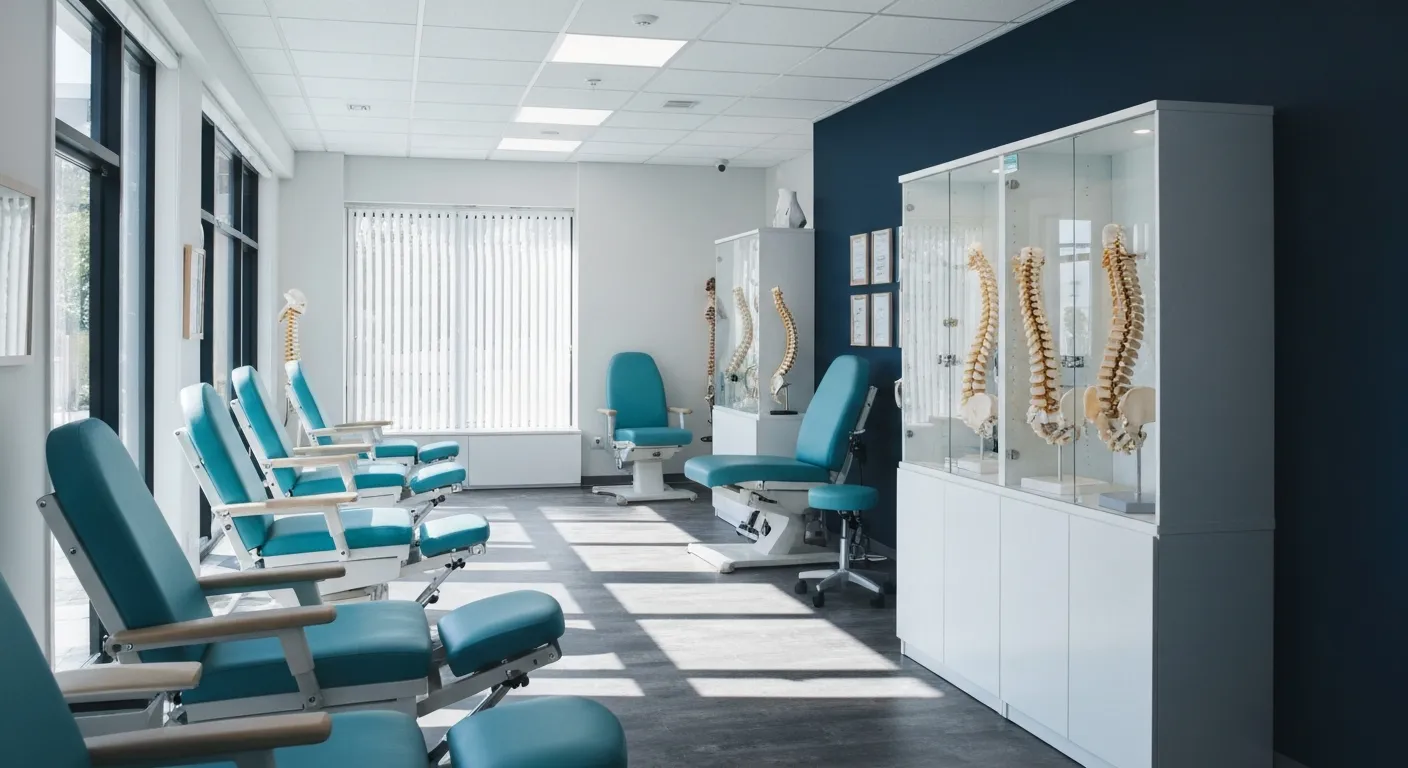
6 Lifestyle Habits That Boost Spine Health Daily

Discover Holistic and Non-Surgical Pain Relief Solutions

Exploring Holistic and Non-Surgical Treatment Options for Pain
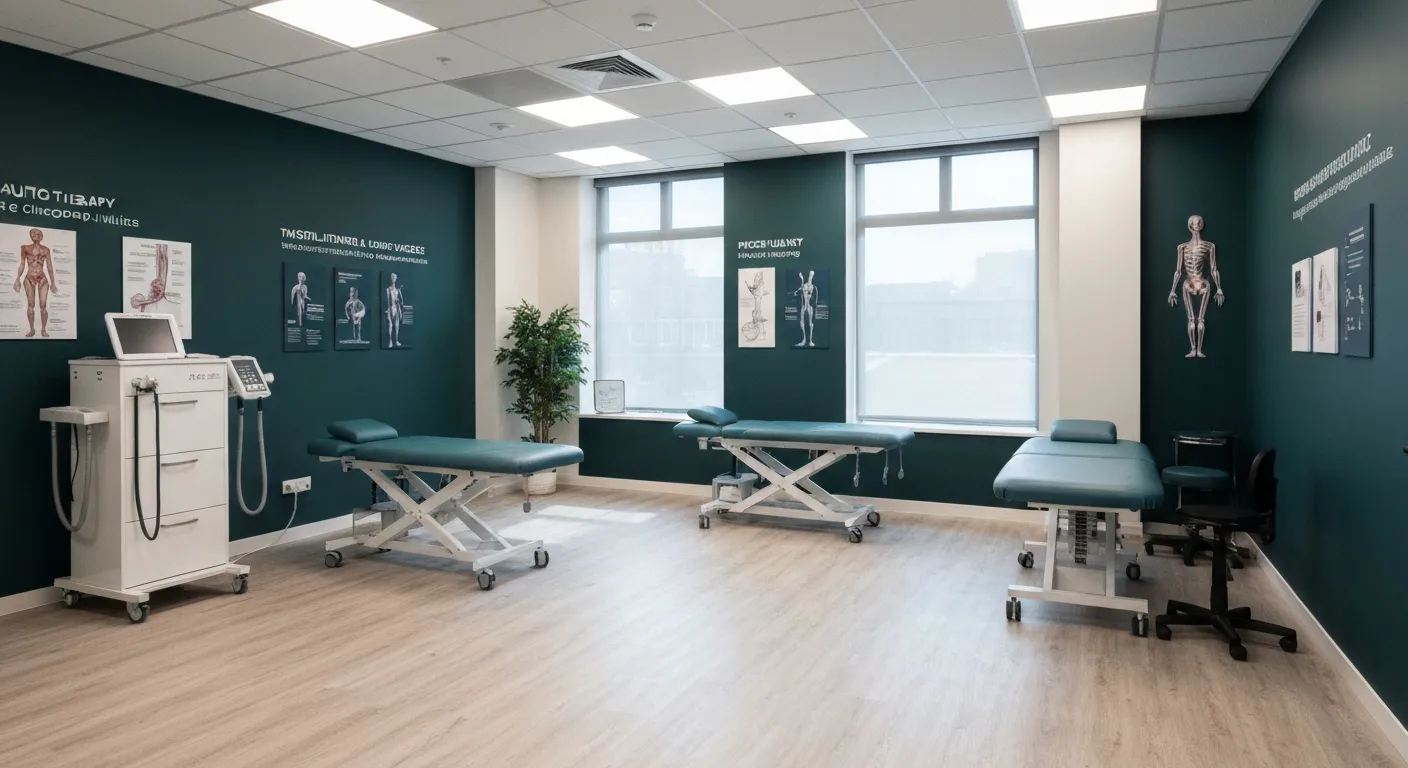
The Role of Physiotherapy in Enhancing Chiropractic Care Outcomes

Complementing Chiropractic Care with Physiotherapy: What You Need to Know
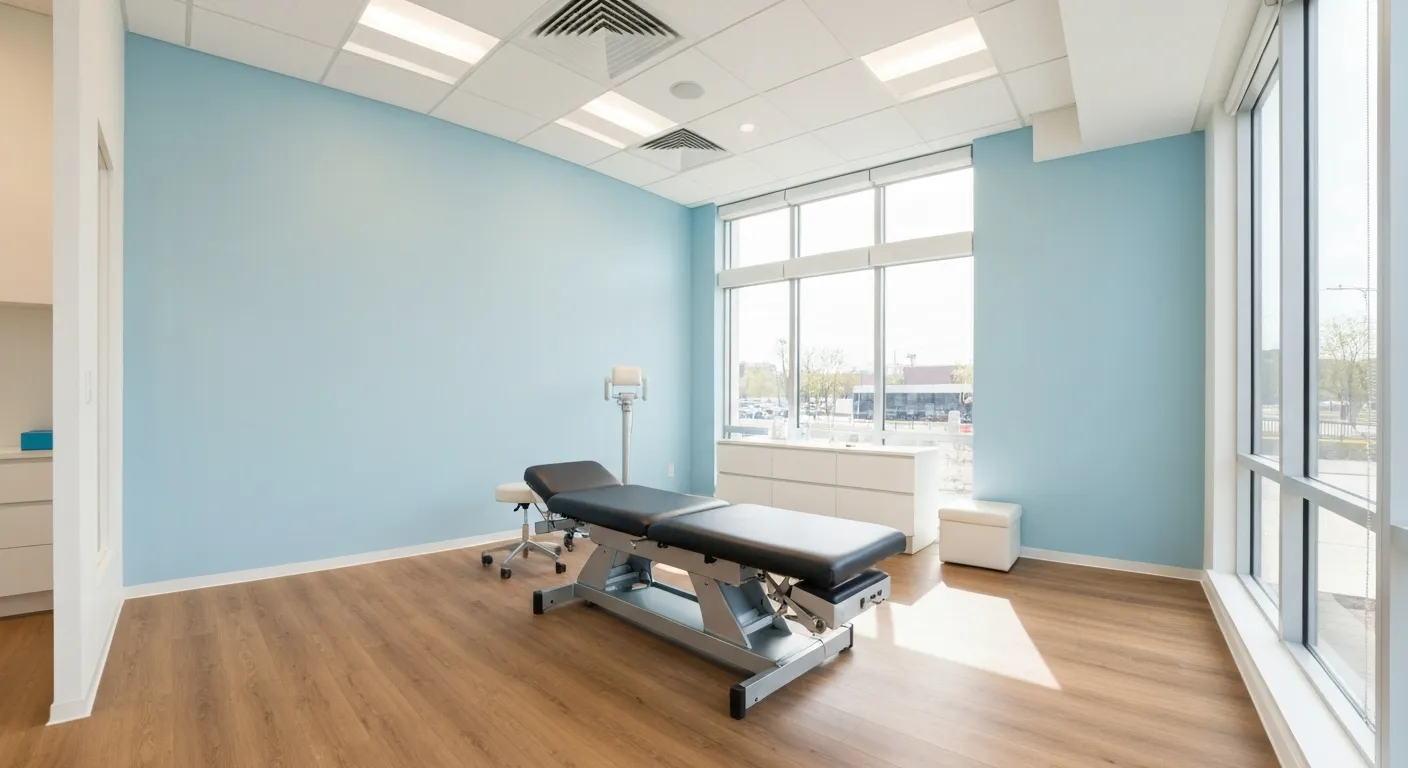
What to Expect During Your First Chiropractic Visit

Simple Lifestyle Adjustments to Maintain a Healthy Spine

Personalized Nutritional Counseling for Improved Health Outcomes

Exploring Non-Surgical Treatments for Spine-Related Conditions

An Introduction to Spinal Decompression for Sciatica Patients

Transformative Success Stories: Patient Experiences with Chiropractic Treatments

Why Chiropractic Care Is Essential for Back Pain Relief

Addressing Underlying Causes Versus Symptom Management in Pain Care

The Role of Nutrition in Enhancing Chiropractic Treatment Effectiveness

Sciatica Treatment Options: Is Spinal Decompression Right for You?

Lifestyle Tips to Maintain a Healthy Spine and Prevent Back Issues

The Synergy Between Physiotherapy and Chiropractic Treatments

What Happens During Your Initial Chiropractic Consultation

Effective Corrective Exercises for Sustainable Pain Management

Taking a Root Cause Approach to Chronic Pain Management

Holistic Pain Management Techniques Without Surgery

How Patient Success Stories Validate Chiropractic Care Benefits

Spinal Decompression: Innovative Treatment for Sciatic Nerve Pain

Spinal Decompression Therapy: A Non-Invasive Approach to Sciatica Relief

Exploring Holistic Approaches Beyond Surgery for Pain Relief

Practical Lifestyle Advice to Support a Healthy Spine Every Day

Corrective Exercise Routines Designed for Long-Term Pain Prevention

Real Patient Stories: Overcoming Chronic Pain with Chiropractic Care

Lifestyle Changes That Promote a Healthy Spine and Prevent Injury

How Addressing the Root Cause of Pain Leads to Lasting Relief

Non-Surgical Holistic Therapies to Manage Chronic Pain Effectively

Nutritional Counseling's Impact on Physical Health and Healing

Benefits of Regular Chiropractic Care for a Stronger Back

Your First Chiropractic Visit: What to Expect and How to Prepare

Patient Experiences: How Chiropractic Care Transformed Their Lives

Exploring Holistic, Non-Surgical Options for Pain Management

Combining Physiotherapy with Chiropractic Treatments for Enhanced Recovery

Holistic Treatments That Offer Alternatives to Surgery for Pain Relief

Corrective Exercise Strategies for Long-Term Spine Health

How Physiotherapy Complements Chiropractic Adjustments for Better Outcomes

First-Time Chiropractic Visitors: What You Should Know

Understanding the Importance of Treating Pain at Its Source

Adopting Lifestyle Changes to Support Your Spine's Wellness

Utilizing Physiotherapy to Enhance Chiropractic Treatment Outcomes

The Key Advantages of Chiropractic Care for Back Pain Sufferers

Why Focusing on Root Causes Improves Pain Treatment Success

Corrective Exercises That Promote Lasting Pain Relief and Mobility

Sciatica Relief Through Targeted Spinal Decompression Techniques

Preparing for Your First Chiropractic Appointment with Confidence

Healthy Lifestyle Habits for Maintaining Spinal Alignment

Success Stories Highlighting Chiropractic's Role in Pain Recovery

Top Benefits of Chiropractic Care for Chronic Back Pain

Nutrition Tips to Boost Your Overall Wellness and Recovery

How Chiropractic Care Alleviates Back Pain Naturally

How Nutritional Counseling Supports Overall Wellness and Spine Health

Step-by-Step Guide to Your First Visit with a Chiropractor

Using Nutrition to Support Chiropractic and Overall Wellness

Integrating Physiotherapy in Your Chiropractic Healing Journey

How Physiotherapy Complements Chiropractic Adjustments for Faster Healing

Lifestyle Tips for Maintaining a Healthy Spine and Preventing Back Pain

Heartwarming Patient Testimonials Highlighting Chiropractic Success

How Proper Nutrition Supports Chiropractic and Physiotherapy Treatments

Combining Physiotherapy and Chiropractic Treatments for Optimal Recovery

Why Chiropractic Treatments Are Effective for Managing Back Pain

Choosing a Chiropractor: Tips for Finding a Trusted Provider

Integrating Physiotherapy and Chiropractic: Benefits and What to Expect

How Tailored Corrective Exercises Can Aid in Pain Management

Chiropractic Care: A Proven Solution for Alleviating Back Pain

What to Expect at Your First Chiropractic Visit: A Comprehensive Guide

The Importance of Root Cause Analysis in Effective Pain Management

The Role of Corrective Exercises in Sustaining Pain-Free Living

Combining Chiropractic and Physiotherapy for Comprehensive Pain Relief

How Addressing Underlying Causes Improves Pain Treatment Effectiveness

Maintaining Spinal Health Through Lifestyle Changes and Preventive Care

Understanding the Benefits of Chiropractic Adjustments for Back Pain Sufferers

Spinal Decompression Therapy: A New Hope for Sciatica Relief

Lifestyle Recommendations to Support a Healthy Spine and Reduce Pain

Choosing the Right Chiropractor: Key Factors to Consider Before Your First Appointment

Non-Invasive Treatment Alternatives: A Holistic Approach to Pain Relief

Corrective Exercises to Support Long-Term Relief from Chronic Pain

Exploring Non-Surgical Approaches to Spine Health and Wellness

Tips for Daily Habits That Keep Your Spine Strong

Success Stories: How Chiropractic Treatments Changed Lives

Why Focusing on the Root Cause of Pain Leads to Better Outcomes

Nutritional Counseling and Its Impact on Overall Wellness and Recovery
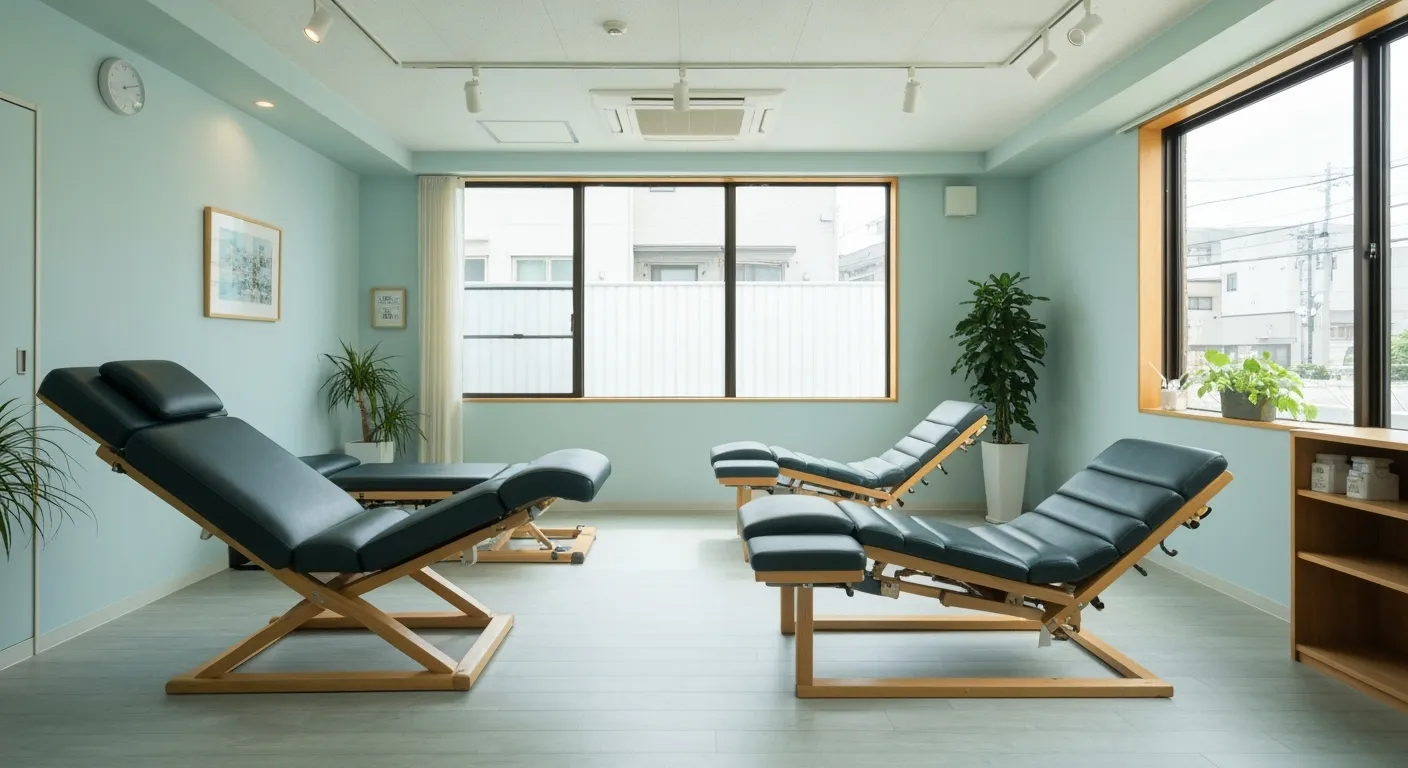
Patient Testimonials That Showcase the Power of Chiropractic Care
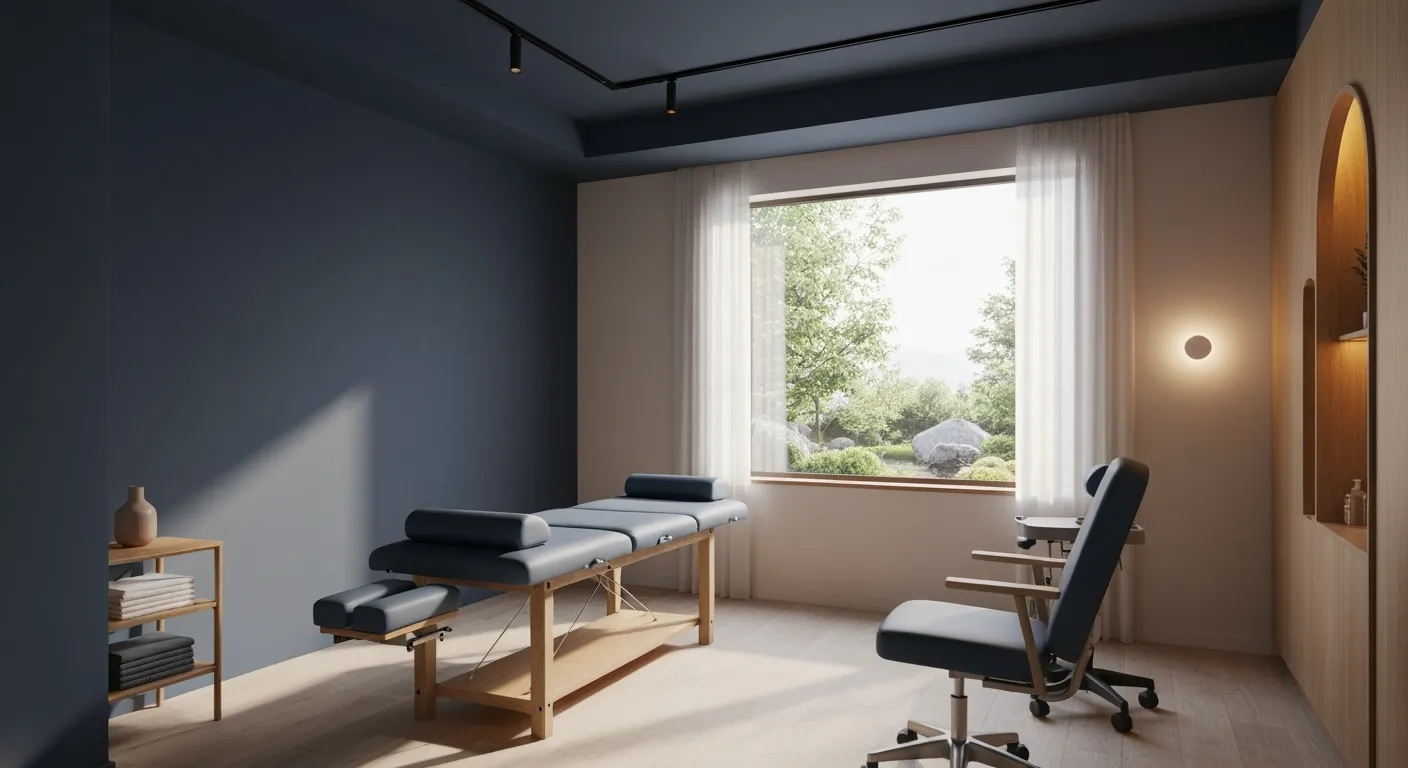
Preparing for Your First Chiropractic Appointment: What You Need to Know

